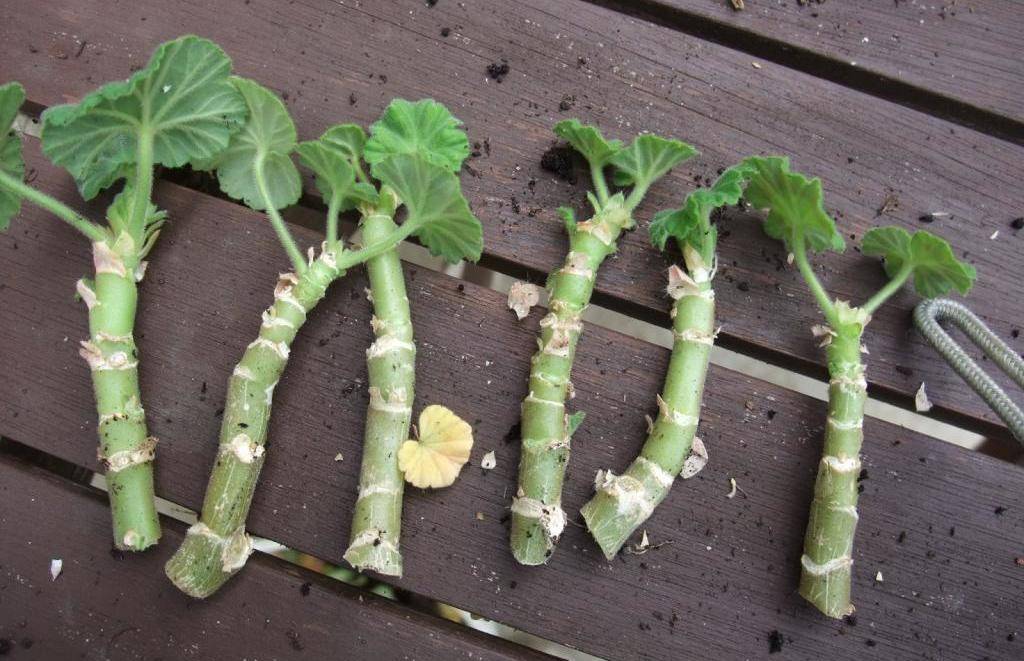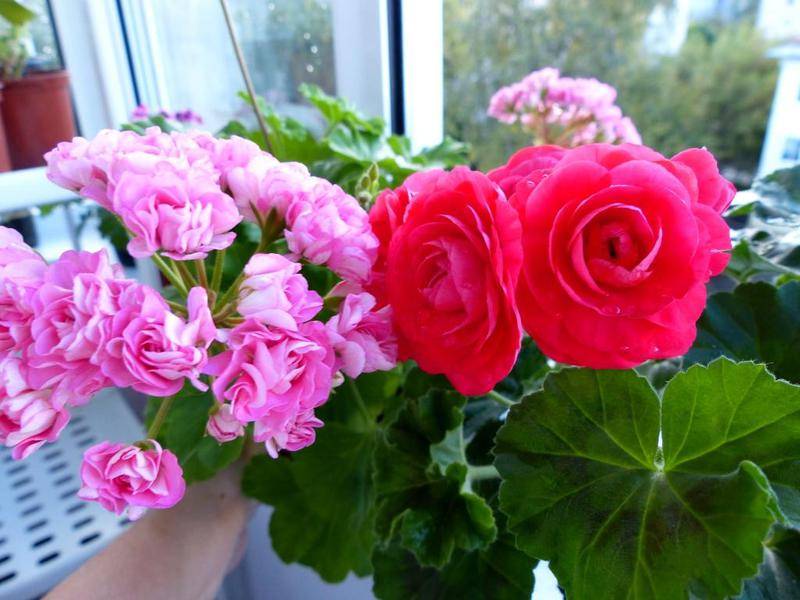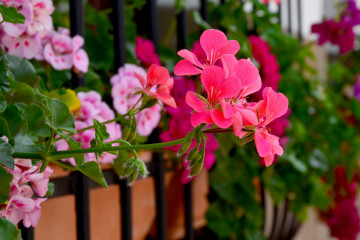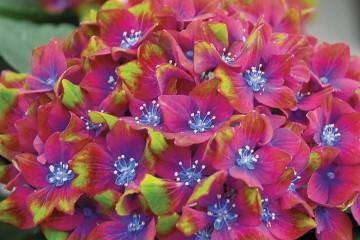Pelargonium PAC Viva Carolina - description, planting and care
Content:
The genus Pelargonium is part of the Geraniev family. Among them, perennial varieties are especially valuable. Plants can be shrubby, herbaceous. Varieties differ in the abundance of flowers, colors and patterns of buds, a variety of shades, sizes and shapes of leaves. The most popular for home breeding is Pac Viva Carolina pelargonium.
Description of the pelargonium variety PAC Viva Carolina and its characteristics
Pelargonium Pak Viva Carolina has an ivy crown, densely double buds, hanging stems. The ampelous bush grows stems up to 1.5 m long.
The leaf plate is deep green in color. In the description of flowers, there are also semi-double and even simple forms.
Inflorescences are pink-lilac. The doubleness of the buds increases with age.
Other types of PAC Viva
The abundance of varieties of culture allows everyone to choose their favorite color tone. Although prized for their colorful buds, there are also specimens with very beautiful foliage.
PAC Viva Madeleine
Pelargonium PAC Vita Madeleine (PAC Viva Madeleine) is a fairly compact bush with a long flowering. In partial shade, the petals are snow-white, and in the open sun they turn pink. Leaves are small, dense green.
PAC Viva Rosita
Pelargonium variety Pac Viva Rosita blooms luxuriantly. The buds, collected in inflorescences, dissolve bright scarlet petals. Flowering lasts about a half moon. This variety is most often chosen for home collections.
Pac viva maria
Pelargonium Pak Viva Maria (PAC Viva Maria) is distinguished by the size of the buds. It is covered with large double flowers. The color of the petals is peculiar, they are pearl pink with dense crimson markings in the center. Because of them, Viva Maria is called a scout.
Planting and further care
For pelargonium, a ready-made soil is chosen. The plant prefers partial shade. The western and eastern windows are perfect for them. The flower is thermophilic, but needs ventilation.
A flower needs a small planting capacity.
Further care consists in:
- watering;
- top dressing;
- pruning.
Planting a plant
For indoor maintenance, rooted cuttings are planted from March to November. It can also be rooted in summer, for example, in August-September. Young plants can be transplanted into the garden after warm weather is established and the soil warms up.
Watering, spraying and fertilizing
Pelargonium cannot be called a moisture-loving culture. It is enough not to allow the soil to dry out too much. Watering is best done through the pallet. Through the drainage holes, the roots will take the right amount of moisture. Spraying the bushes is also not recommended. In very dry indoor air, you can spray water around the flower. The optimum air humidity for pelargonium is 60-65%.
Initially, the soil for the flower is selected with neutral acidity. The nutrient elements of the prepared soil are sufficient until the next season. Two-year-olds should begin to feed.It is best to use special fertilizers in the recommended proportions. During the growing season, it is enough to apply fertilizing twice a month.
Pruning
The crown of pelargonium needs to be formed. The cardinal haircut is carried out in February. The procedure is aimed at removing damaged branches and pinching the rest. So the tillering will become more abundant, which means there will be more flowers.
Reproduction
You can get new bushes of pelargonium in two ways - cuttings or seeds. Planting work is best done in early spring or late summer.
For rooting, cuttings 7-9 cm long with 3-4 internodes are suitable. They can be rooted in water, planted directly into the ground. Rooting will take place in 7-10 days.
When sowing seeds, getting a flowering bush so quickly will not work. Crops will hatch at the end of 2 weeks. Then you need to wait until 3-4 real leaves appear on the seedlings. Only then can they be put in their permanent place. The entry into flowering will have to wait for at least another 1.5-2 months.
Rooting cuttings makes it possible to get a flowering bush much faster than sowing seeds.
Diseases and pests: means of combating them
The culture has good immunity. Diseases appear only with mistakes in care. It is characterized by:
- the fungus of the heap;
- blackleg;
- gray rot;
- nematode.
She is also attacked by pests:
- aphid;
- whitefly;
- various caterpillars.
To combat diseases and pests, special insecticides and fungicides are used.
Decorative application
Landscape designers love to use pelargonium for flower arrangements. It is important to plant them in the foreground, although they look good in the midline as well.
Hanging culture options can be used to decorate vacation spots. Flower vases are perfect for decorating balconies and terraces.
Pelargonium is a versatile flower for interior decoration. Exuberant long flowering allows you not to think about violating the decorativeness of flower beds. The entire warm season, the bush will delight you with even flowering. Ease of breeding and easy maintenance make it irreplaceable.



















